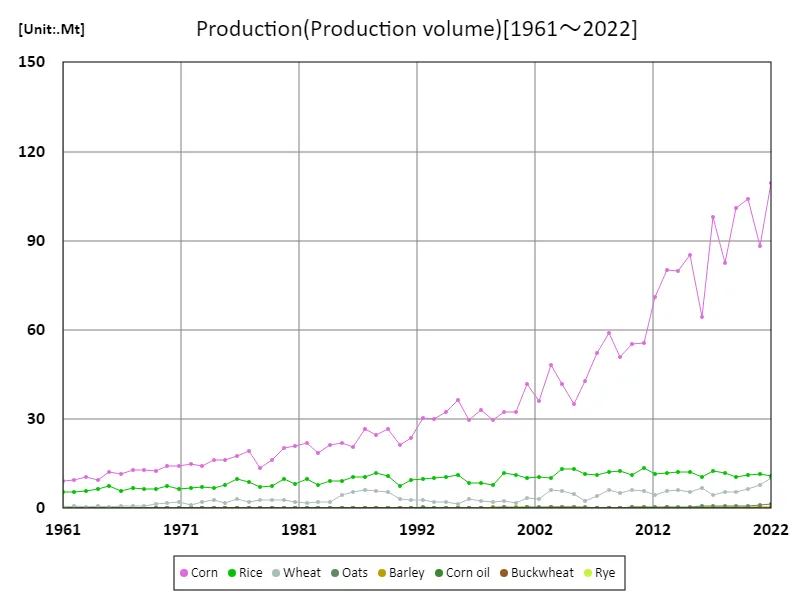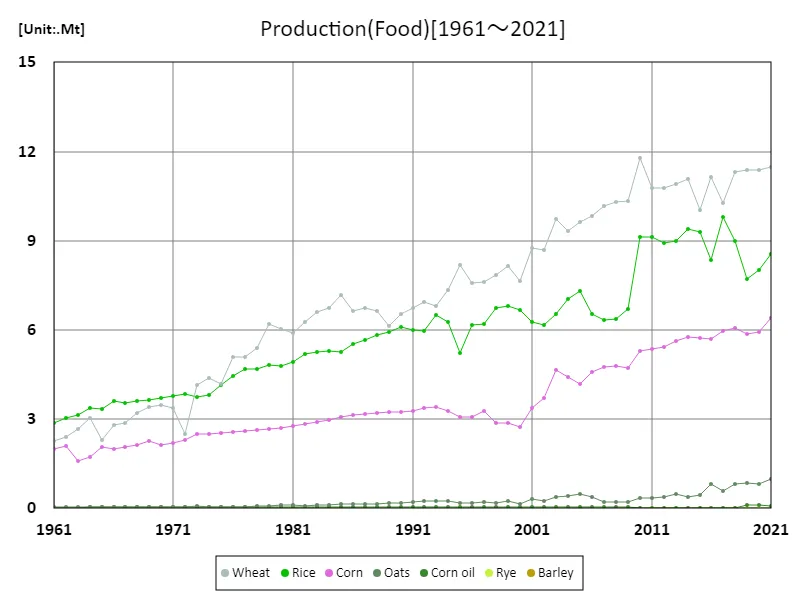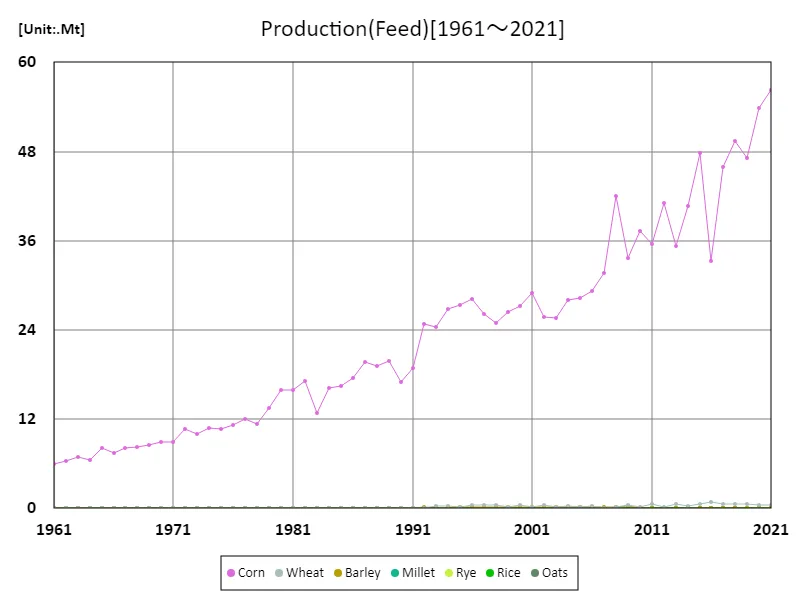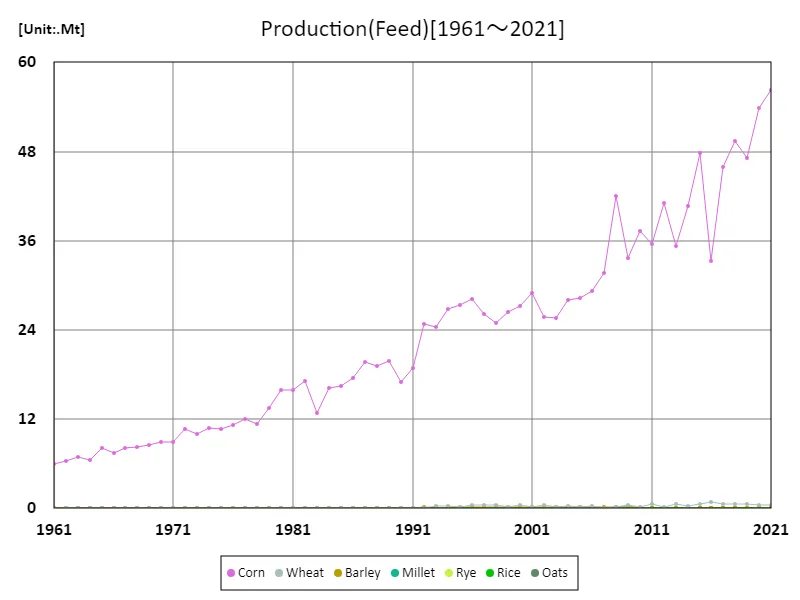Abstract
Brazil is one of the world’s leading grain producing countries, with corn and soybeans being its main crops. According to data for 2022, corn production was 109 million tonnes (Mt), making it the largest crop. The country’s grain production serves both domestic consumption and exports, the latter being particularly important. Soybeans are primarily consumed for food, while corn and wheat are widely used for food and animal feed. Brazil’s grain exports, mainly to China and the European Union, are an important source of income for the economy. In addition, due to advances in climatic conditions and agricultural technology, productivity is improving year by year, and this trend is predicted to continue in the future.
Production(production (production volume))
Brazil’s grain production has experienced significant growth between 1961 and 2022. In particular, corn production reached a record high of 109 million tonnes (Mt) in 2022. This has brought corn to 100% of its peak production. This growth is due to advances in agricultural technology, the development of new arable land, and increasing domestic and international demand. Especially since the 1990s, Brazil has introduced efficient production methods that have made it more competitive in the global grain market. Corn, an important crop alongside soybeans, enjoys a strong presence not only in domestic consumption but also in the export market. In addition, factors such as climatic conditions, the increased use of fertilizers and pesticides, and the introduction of genetic engineering technology are all contributing to the increase in production.


The maximum is the latest one, 109Mt of Corn
Production (food)
Brazil’s food production of cereals has increased gradually between 1961 and 2021. Wheat in particular peaked at 11.8 million tonnes (Mt) in 2010 and has maintained its position as an important food crop since then, but production is currently at only 97.5% of its peak level. This trend may be due to fluctuating climatic conditions and poor harvests in some production regions. While Brazil produces a lot of crops, mainly soybeans and corn, its wheat production is insufficient to meet domestic consumption, and the country relies on imports. However, in recent years, production has been stabilizing, especially in the southern region, and is now able to cover part of domestic demand. Despite improvements in production efficiency and advances in breeding, wheat production for food use remains dependent on external factors, so there is a need to continue striving for a stable supply.


The maximum is 11.8Mt[2010] of Wheat, and the current value is about 97.5%
Import and export (exports)
Brazil’s grain exports have increased significantly since 1961, with corn exports reaching a record high of 43 million tons (Mt). This indicates that Brazil is an important exporter in the global grain market. In 1961, exports totaled 45.1 million tons and have been steadily increasing ever since. The average export volume was 6.45 million tons, indicating that Brazil’s grain production capacity has gradually increased and its competitiveness in the export market has strengthened. In particular, crops such as soybeans and corn account for the majority of exports, and this is due to increased demand from Asia and Europe. The increase in exports is also supported by improvements in Brazilian agricultural technology and expanded production through the development of new farmland. This has established Brazil as a major agricultural exporter and plays a key role in meeting demand on the global market.


The maximum is the latest one, 56.3Mt of Corn
Animal (feed)
The role of animal feed in Brazilian cereal production is significant, especially for corn. Data from 1961 shows that corn production as animal feed reached a record high of 56.3 million tons (Mt), which is closely linked to the development of Brazil’s livestock industry. Corn is an important source of nutrition as livestock feed and is an essential crop for domestic livestock farming. Brazil is a global meat producing and exporting country, and a stable supply of feed contributes to the growth of the livestock industry. In particular, corn is positioned as an important feed source in chicken and pork production, and demand for it is increasing. In addition, thanks to improvements in agricultural technology and more efficient production methods in Brazil, corn production has been steadily increasing, not only meeting domestic demand but also making the country competitive in the export market. Thus, the production of corn for animal feed plays an important role in the growth of Brazil’s agriculture and livestock industries.


The maximum is the latest one, 56.3Mt of Corn



Comments